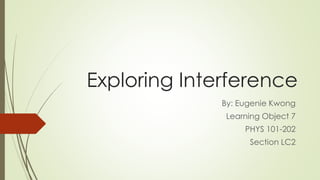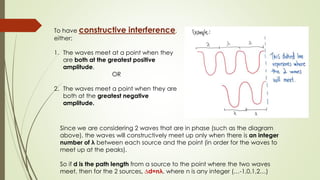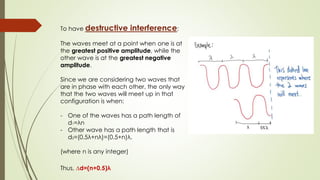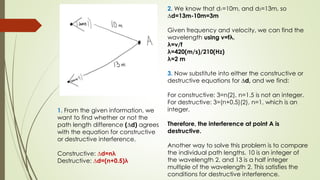1. The document discusses constructive and destructive interference that occurs when two waves meet at a point.
2. For constructive interference to occur, the path length difference (Δd) between the waves must be an integer multiple of the wavelength. For destructive interference, Δd must be a half-integer multiple of the wavelength.
3. The document uses examples of waves that are in-phase or out-of-phase to show how the equations for Δd change depending on whether the interference is constructive or destructive.









